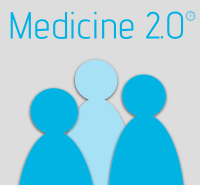InfoWell Patient Portal: A Case of Patient-Centred Design
|
If you are the presenter of this abstract (or if you cite this abstract in a talk or on a poster), please show the QR code in your slide or poster (QR code contains this URL). |
Abstract
Objectives
There is still much to understand about the benefits of Patient Portals and patient access to their electronic health record. Specifically usability best practices for their design and development and insight into what patients really want to see in a Patient Portal.
The InfoWell Patient Portal is a tool designed to assist patients in the management of a chronic condition by providing education, and improving access, support, and navigation through the continuum of care. The objective of the usability component of the InfoWell Patient Portal project is to engage patients throughout the design and development phase to ensure the final end product meets user needs in terms of content and tools, and is easy to use in order to encourage user adoption.
Context/Situation
The InfoWell Patient Portal represents the largest comprehensive personalized health information website in the province that spans the continuum of care. The SIMS Partnership, the information management and technology (IM/IT) group shared between thirteen health care organizations in the Greater Toronto Area, has led its development.
The InfoWell Patient Portal was developed in response to the demand for greater access to health information for patients. Breast cancer, diabetes, and chronic kidney disease patients were chosen in particular due to the perceived benefits of being more educated, informed, and proactive, enabling self-management and ultimately resulting in improved health outcomes, for these particular groups.
Method
The InfoWell Patient Portal utilized a user-centred design (UCD) methodology to gather requirements, insight, and feedback from patients. This provided health care and IT professionals, and researchers an enlightened perspective as to what patients really want. The requirements gathering process involved an ethnographic approach of using patient interviews and surveys. Patients helped to improve content organization, navigation, menus, and taxonomy of the website through a "Card Sorting Method". Several stages of iterative user testing were conducted to determine the ease of use of the website and to collect suggestions on future tools and functionality for the portal.
Benefits
Involving end-users in the design and development of the InfoWell Patient Portal help to ensure that 1) The content and tools are useful and meet the needs of patients, 2) The website is intuitive and easy-to-use in terms of design and navigation, thereby increasing the likelihood of widespread adoption by end-users.
Results
Results of usability testing were incorporated into the iterative design cycle for the Patient Portal and resulted in continual improvement in terms of ease of use with regards to navigation, content groupings and labels, with potential for scalability of disease groups and additional partner organizations. In particular, the card sorting exercise significantly improved the content organization of the website to better correspond to patient expectations.
While it is important to engage patients in the requirements gathering phase, it has proven essential to directly observe patients' interaction with the website and tools through iterative usability testing in order identify any disconnects between the goals of health care organizations for the portal, and those of the patient.
There is still much to understand about the benefits of Patient Portals and patient access to their electronic health record. Specifically usability best practices for their design and development and insight into what patients really want to see in a Patient Portal.
The InfoWell Patient Portal is a tool designed to assist patients in the management of a chronic condition by providing education, and improving access, support, and navigation through the continuum of care. The objective of the usability component of the InfoWell Patient Portal project is to engage patients throughout the design and development phase to ensure the final end product meets user needs in terms of content and tools, and is easy to use in order to encourage user adoption.
Context/Situation
The InfoWell Patient Portal represents the largest comprehensive personalized health information website in the province that spans the continuum of care. The SIMS Partnership, the information management and technology (IM/IT) group shared between thirteen health care organizations in the Greater Toronto Area, has led its development.
The InfoWell Patient Portal was developed in response to the demand for greater access to health information for patients. Breast cancer, diabetes, and chronic kidney disease patients were chosen in particular due to the perceived benefits of being more educated, informed, and proactive, enabling self-management and ultimately resulting in improved health outcomes, for these particular groups.
Method
The InfoWell Patient Portal utilized a user-centred design (UCD) methodology to gather requirements, insight, and feedback from patients. This provided health care and IT professionals, and researchers an enlightened perspective as to what patients really want. The requirements gathering process involved an ethnographic approach of using patient interviews and surveys. Patients helped to improve content organization, navigation, menus, and taxonomy of the website through a "Card Sorting Method". Several stages of iterative user testing were conducted to determine the ease of use of the website and to collect suggestions on future tools and functionality for the portal.
Benefits
Involving end-users in the design and development of the InfoWell Patient Portal help to ensure that 1) The content and tools are useful and meet the needs of patients, 2) The website is intuitive and easy-to-use in terms of design and navigation, thereby increasing the likelihood of widespread adoption by end-users.
Results
Results of usability testing were incorporated into the iterative design cycle for the Patient Portal and resulted in continual improvement in terms of ease of use with regards to navigation, content groupings and labels, with potential for scalability of disease groups and additional partner organizations. In particular, the card sorting exercise significantly improved the content organization of the website to better correspond to patient expectations.
While it is important to engage patients in the requirements gathering phase, it has proven essential to directly observe patients' interaction with the website and tools through iterative usability testing in order identify any disconnects between the goals of health care organizations for the portal, and those of the patient.

Medicine 2.0® is happy to support and promote other conferences and workshops in this area. Contact us to produce, disseminate and promote your conference or workshop under this label and in this event series. In addition, we are always looking for hosts of future World Congresses. Medicine 2.0® is a registered trademark of JMIR Publications Inc., the leading academic ehealth publisher.

This work is licensed under a Creative Commons Attribution 3.0 License.



